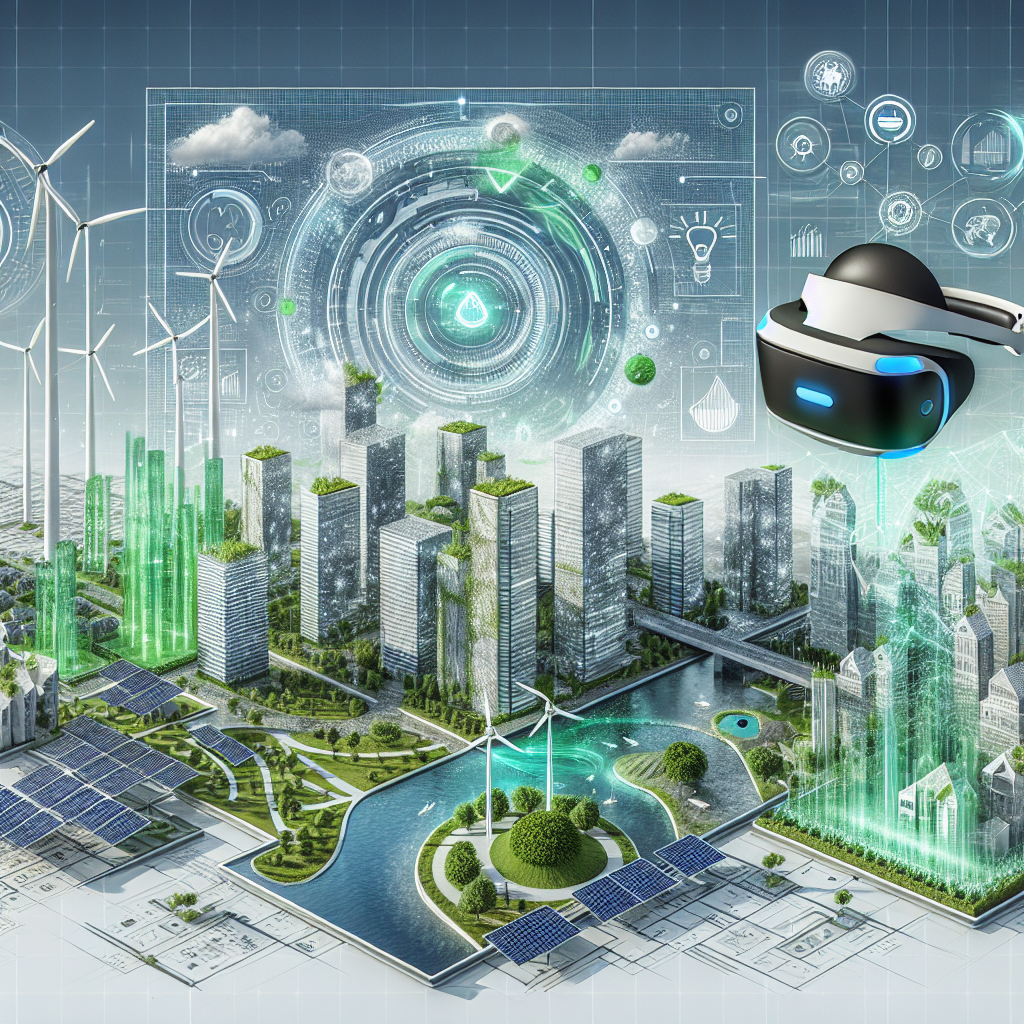The Role of AI in Sustainable Urban Planning
Urbanization is a global phenomenon that is rapidly changing the landscape of cities around the world. As more people move to urban areas, the need for sustainable urban planning becomes increasingly important. Sustainable urban planning aims to create cities that are environmentally friendly, socially inclusive, and economically viable. One of the key tools that can help achieve this goal is artificial intelligence (AI).
AI has the potential to revolutionize the way cities are planned and managed, making them more efficient, resilient, and sustainable. From predicting traffic patterns to optimizing energy usage, AI can help urban planners make informed decisions that benefit both the environment and the residents of the city.
Predictive Analytics
One of the key ways AI can be used in sustainable urban planning is through predictive analytics. By analyzing vast amounts of data, AI algorithms can predict future trends and patterns in areas such as traffic flow, energy usage, and waste management. This can help urban planners anticipate potential problems and develop strategies to address them before they become critical.
For example, AI can analyze traffic data to predict congestion hotspots and recommend alternative routes or transportation modes to reduce traffic congestion and air pollution. Similarly, AI can analyze energy usage data to identify opportunities for energy savings and recommend energy-efficient technologies to reduce carbon emissions.
Optimization
AI can also be used to optimize city systems and infrastructure to improve efficiency and sustainability. For example, AI algorithms can optimize public transportation routes to reduce travel times and emissions, or optimize waste collection schedules to minimize fuel consumption and emissions.
In addition, AI can help optimize energy usage in buildings by adjusting heating, cooling, and lighting systems based on occupancy patterns and weather conditions. This can lead to significant energy savings and reduce the carbon footprint of buildings.
Smart Cities
AI is a key component of smart cities, which use technology and data to improve the quality of life for residents and make cities more sustainable. Smart cities use AI-powered sensors, cameras, and other devices to collect real-time data on various aspects of city life, such as traffic flow, air quality, and energy usage.
By analyzing this data, AI algorithms can provide valuable insights to urban planners and policymakers, enabling them to make informed decisions that improve the efficiency and sustainability of the city. For example, AI can help optimize traffic signal timings to reduce congestion and emissions, or predict air pollution levels to alert residents and authorities to take preventive measures.
Challenges and Opportunities
While AI has the potential to revolutionize sustainable urban planning, it also presents challenges that need to be addressed. One of the key challenges is data privacy and security, as AI algorithms rely on vast amounts of data to make accurate predictions and recommendations. Urban planners need to ensure that data is collected and used in a transparent and ethical manner, and that residents’ privacy is protected.
Another challenge is the potential for AI algorithms to reinforce existing biases and inequalities in cities. For example, if AI algorithms are trained on biased data, they may produce biased results that favor certain groups or neighborhoods over others. Urban planners need to be aware of these biases and take steps to mitigate them to ensure that AI is used in a fair and equitable manner.
Despite these challenges, AI presents numerous opportunities for sustainable urban planning. By harnessing the power of AI, cities can become more efficient, resilient, and sustainable, leading to a better quality of life for residents and a healthier environment for future generations.
FAQs
Q: How can AI help reduce traffic congestion in cities?
A: AI can analyze traffic data to predict congestion hotspots and recommend alternative routes or transportation modes to reduce traffic congestion and air pollution. By optimizing traffic signal timings and public transportation routes, AI can help reduce travel times and emissions in cities.
Q: How can AI help optimize energy usage in buildings?
A: AI algorithms can analyze energy usage data to identify opportunities for energy savings and recommend energy-efficient technologies to reduce carbon emissions. By adjusting heating, cooling, and lighting systems based on occupancy patterns and weather conditions, AI can help optimize energy usage in buildings.
Q: How can AI help improve waste management in cities?
A: AI can analyze waste collection data to optimize collection schedules and routes, minimizing fuel consumption and emissions. By predicting waste generation patterns and recommending recycling and composting programs, AI can help cities reduce waste and improve recycling rates.
Q: What are some examples of smart city initiatives that use AI?
A: Smart city initiatives that use AI include traffic management systems that optimize traffic signal timings, air quality monitoring systems that predict pollution levels, and energy management systems that optimize energy usage in buildings. By collecting real-time data and analyzing it with AI algorithms, these initiatives improve the efficiency and sustainability of cities.
In conclusion, AI has the potential to revolutionize sustainable urban planning by providing valuable insights and recommendations to urban planners and policymakers. By analyzing data, predicting future trends, and optimizing city systems, AI can help cities become more efficient, resilient, and sustainable. However, it is important for urban planners to address challenges such as data privacy and biases to ensure that AI is used in a fair and equitable manner. With careful planning and implementation, AI can help create cities that are environmentally friendly, socially inclusive, and economically viable for future generations.

